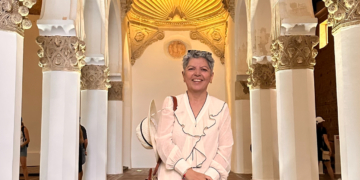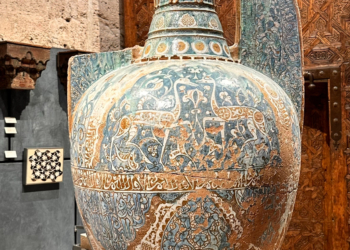Beautiful Picassos
Mother and Child
Gallery Text
they unite contemporary social concerns with an iconic Christian theme. The mother’s attenuated limbs speak to Picasso’s close study of the work of earlier artists, particularly El Greco.
Like many paintings in this gallery, this one was executed on a reused canvas, and another composition lies beneath this scene. That painting is a portrait of Picasso’s friend, the poet Max Jacob, who sits in his study surrounded by books. Some evidence of the image is still visible, particularly the contours of the face, which is roughly the same size as the mother’s head and is located above her knees.

Gallery Text
Picasso painted this portrait during his early-career “Blue Period,” so named for the color that predominated in his work at the time. The muted palette, blocks of interrupted color, and abstracted forms with strong outlines typify the artist’s approach at this stage, one of the most celebrated of his career. The discordant styles and confrontational poses in the portraits on both sides of this canvas represent a bold and humorous assertion of his developing style. While it stands in stark contrast to Toulouse-Lautrec’s technique, which Picasso imitates on the other side of the canvas, his depiction of a dour, solitary figure in a café interior reinterprets a subject long favored by the impressionists. Picasso’s paintings from 1901 include numerous depictions of a dark-haired woman with this “chignon” hairstyle, a tight bun on the crown of the head.
Identification and Creation
Object Number
1951.55.1
People
Pablo Ruiz Picasso, Spanish (Malaga, Spain 1881 – 1973 Mougins, France)
Title
Woman with a Chignon

Gallery Text
Completed when he was just nineteen years old, this is one of a small number of double-sided paintings that Picasso made in 1901. In each, one side of the canvas features a portrait in the manner of late nineteenth-century French artists. The other side, however, shows a different figure, executed in Picasso’s emergent distinctive style. This composition mimics paintings by Toulouse-Lautrec in its palette and short, energetic brushstrokes, while the frontal pose and confrontational gaze of the sitter recall his portraits of the 1890s. This side of the double-sided canvas was traditionally considered the lesser of the two paintings, and it was hung against the wall, hidden from view, in Wertheim’s home.
Identification and Creation
Object Number
1951.55.2
People
Pablo Ruiz Picasso, Spanish (Malaga, Spain 1881 – 1973 Mougins, France)
Title
Young Girl Wearing a Large Hat

Gallery Text
Picasso mastered several traditional and contemporary manners of painting before he and Georges Braque arrived at the breakthrough innovation of cubism in 1907–8. More than merely an experimental phase, his early practice established an instinct for pluralism that would characterize the artist’s practice throughout his life.
In this work, which embodies a rebellion of sorts against his early academic training, Picasso took inspiration from the coarse graphic art of popular periodicals, a probable source for the sinuous art deco–inspired lines that circumscribe fields of flat color in the dreamlike landscape. Amorphously rendered, a woman in the foreground contemplates the ravine below while another woman and her charge descend the path from a hilltop village. In the early years of his career the artist shuttled between Paris, Barcelona, Madrid, and small Spanish towns; recent scholarship suggests that this painting was included in Picasso’s first Paris exhibition in 1901.
Identification and Creation
Object Number
1954.38
People
Pablo Ruiz Picasso, Spanish (Malaga, Spain 1881 – 1973 Mougins, France)
Title
Spanish Village

Some more




























